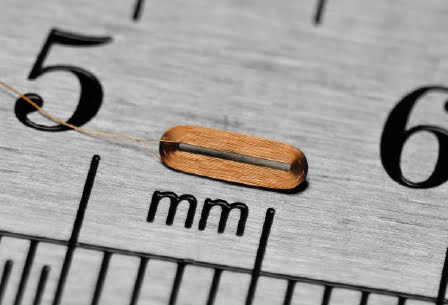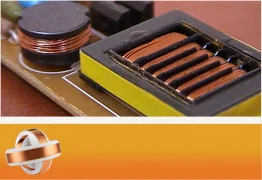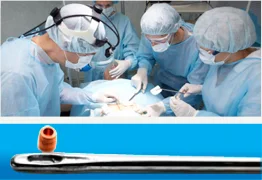What is Micro Soldering?

Traditionally, two similar or dissimilar wires were joined by either welding them (melting together) or soldering them (applying a metal with a lower melting point). So what is micro soldering? Micro soldering is the joining of ultra-fine wires which may by as small as 9 microns, (5 – 10 times thinner than a human hair).
In today’s world, there is an increasing demand for miniaturized and microscopic parts for components, such as sensors and transducers. Building these components requires the ability to join ultra-fine wires and introduces constraints that preclude traditional welding and soldering methods. Ultra-fine wires are often used to wind coils used to manufacture state-of-the-art micro-motion control and positioning systems.
However, joining ultra-fine wire is a non-trivial challenge, especially if the expected size or shape of the final component is constrained by a long list of physical and environmental factors. Components may also have to meet ultra strict tolerance requirements. We can no longer use traditional methods to join ultra-fine wires.
Traditional Methods
The following are some of the traditional methods for joining wires:
- Soldering by applying an external heat source to the joint along with a filler metal.
- Welding by applying an electric current to melt the metals to be joined.
All of these methods either cannot be used at all due to physics constraints, or they introduce other issues, such as:
- Imprecise heat spread that destroys the wires
- Oxidation of the wires and surrounding area
- Physical strain and degradation of the reliability of the connection
The ultimate answer to all these connectivity challenges was found in the form of an innovative thermo-pressure bonding technology recently developed by Benatav. Thermo-pressure bonding technology allows us to connect ultra-fine wires to other ultra-fine wires where either both are similar in diameter and material, or where one wire may be up to 12 times as thick as the other wire and/or a different type of metal.
Examples of Connections
Thermo-pressure bonding can connect:
- Miniature copper thermocouples to ultra-fine wires
- Metal to metal connections of micro-coils to a printed circuit board using thicker intermediate wires
- Micro coils to a support system using metal-plated terminals
The molecular connections formed by this thermo-pressure bonding technology provide highly reliable, corrosion-free, and strain-free joins. The process is also more economical than traditional soldering or welding, which lowers manufacturing costs. We have tested thermo-pressure bonding extensively in a wide variety of customer environments and implemented in several production processes. This has proven its readiness for integration into mass-production processes, while meeting exceptionally high standards, such as those required by medical applications. The process has also proven suitable for both disposable and long-life products, for example, permanent implants.
Applications
The following is a list of some applications that benefit from micro coil and ultra-fine wire connectivity technology:
- Active implants—monitoring or control of implanted pace-makers, or deep brain stimulation components, for example, pain management devices
- Therapeutic applications—devices in electro-physiology treatments, (cardiac or neural), or electricity-based ablations, (microwave and RF)
- Navigation and orientation sensors—targeted drug delivery, targeted radiation catheters, stent positioning, highly accurate ablations, implanted markers, and endoscopic manipulation
- Orthopedic and dental treatment using pulsed electromagnets
- Diagnostic—wireless communication with miniature sensor implants, whether physiological (blood pressure or heartbeat), or flow (blood or respiration)
The Future of Ultra-Fine Wire Technologies
Using innovative ultra-fine wire technologies opens a limitless range of new possibilities to designers of miniaturized medical equipment and other industries. There is a growing need to access high-density body regions while minimizing interference with the body’s regular functioning. At the same time, it is necessary to reduce energy consumption and lengthen the life span of implanted components, which underscores the importance of miniaturization in medical devices.
A miniature coil manufactured by Benatav can serve as a navigation component in a cardio-vascular catheter used to perform cardiac ablation. This component, serving as a key element in a disposable catheter is a typical example of the benefits gained using Benatav’s thermo-pressure technology to mass produce high-quality, miniature components at a reasonable cost. As designers become more aware of micro soldering, we foresee that these advanced technologies and the variety of applications that can use them, their use will become increasingly widespread.
Call Benatav on +972-3-9345951 to discuss how our thermo-pressure technology can benefit your business.





